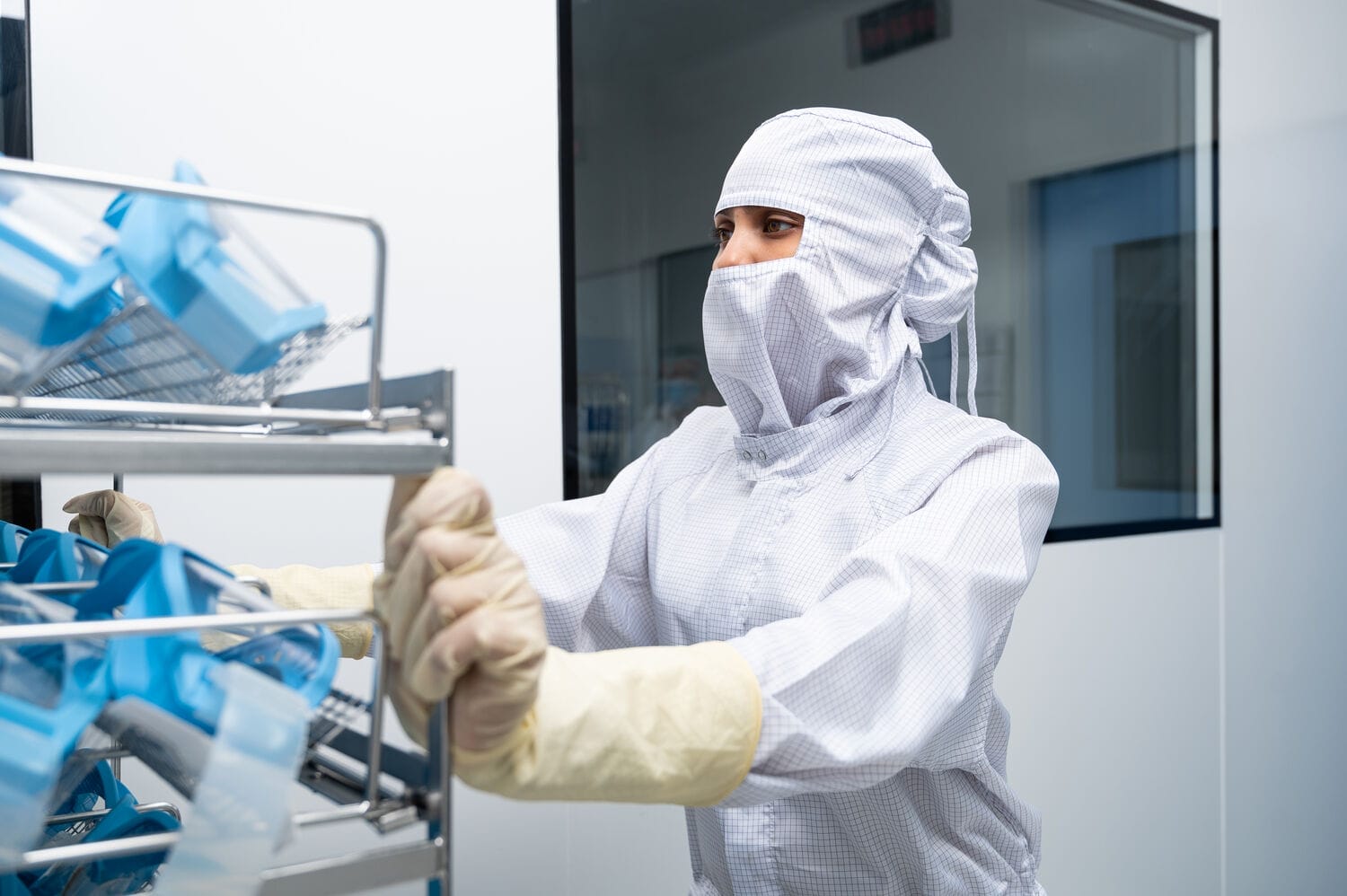
How does gowning enhance contamination control?
Gowning plays a key role in keeping cleanrooms and other controlled environments free from contaminants. By wearing specialised garments, personnel help reduce the risk of introducing particles, microbes or fibres into spaces where cleanliness is essential. This process protects both products and people and is especially important in industries like pharmaceuticals and electronics.
Quick Summary: gowning for cleanroom contamination control
- Gowning limits the spread of particles and microbes in sensitive environments.
- Each garment serves a specific function and must be worn in the correct order.
- Training, protocol compliance, and proper maintenance are essential for success.
- Lindström helps businesses maintain a reliable gowning process with professional service and garment tracking.
The basics of gowning
Gowning involves putting on cleanroom-specific clothing before entering a controlled area. These garments are designed to act as protective barriers that limit the movement of contaminants from a person’s skin or clothing into the environment.
Cleanroom gowns, hoods, gloves, and shoe covers are made from materials that help block dust, resist microbial growth, or reduce static build-up. The type of garment and fabric used depends on the required cleanliness level, which is often defined by regulations like EU GMP Annex 1.
Why cleanrooms rely on gowning protocols
Cleanrooms must meet strict standards that limit airborne particles and surface contamination. In pharmaceutical production, even a few stray particles can compromise product safety. That’s why gowning protocols are in place—to ensure people do not become a source of contamination.
Following the correct gowning process is not only best practice; it’s often a legal requirement. Regulatory inspections will typically review whether gowning procedures are documented, followed consistently, and properly maintained.
How gowning minimises contamination risks
Cleanroom garments help stop particles from shedding into the environment. They cover most of the body and are made from non-linting fabrics. Some materials also include anti-static properties to prevent the attraction of dust or particles.
For gowning to work effectively, the garments must be donned and removed in a specific order. For example, most procedures start with hair and beard covers, followed by coveralls, gloves, and footwear. This order reduces the chance of contamination being transferred from one garment to another.
Gowning procedure: Step by step
A proper gowning process includes:
- Hand hygiene: Wash and sanitise hands thoroughly.
- Hair and beard cover: Ensure full coverage.
- Cleanroom coverall or gown: Avoid letting the garment touch the floor.
- Footwear: Shoe covers or cleanroom boots.
- Gloves: Final step to cover hands completely.
Doffing, or removing garments, must be done with care to avoid releasing particles. Each piece is removed in reverse order, and contact with external surfaces should be avoided.
Common challenges in gowning for contamination control
Despite best efforts, there are a few common issues:
- Inconsistent compliance: People may rush the process or forget steps.
- Uncomfortable garments: Poor fit can reduce compliance and effectiveness.
- Poor maintenance: Dirty or damaged garments no longer offer full protection.
To overcome these issues, companies can use garment tracking systems and outsource cleaning and supply to professional partners. This ensures that gowns are always clean, compliant, and ready when needed.
How a partner like Lindström supports contamination control
Lindström offers a full-service cleanroom garment solution. This includes:
- Rental of cleanroom-compliant gowns and accessories
- Scheduled delivery and professional laundering
- Maintenance and replacements handled proactively
- RFID tracking for garment usage and lifecycle data
With Lindström, your team always has access to well-maintained garments. Our focus on sustainability also means that gowns are reused and recycled wherever possible, helping you meet environmental targets as well as hygiene standards.

FAQ – Common questions about gowning
What is the purpose of gowning in contamination control?
Gowning reduces the risk of introducing contaminants into cleanrooms by creating a barrier between the wearer and the controlled environment.
What types of garments are used in cleanroom gowning?
Typical garments include coveralls, hoods, gloves, shoe covers, and sometimes goggles or masks. The exact items depend on the cleanroom’s classification and industry requirements.
Why is the order of gowning important?
Wearing garments in the correct sequence helps avoid transferring contaminants from one item to another and ensures full body coverage.
How often should cleanroom gowns be replaced or cleaned?
This depends on usage frequency and the environment, but garments should be professionally laundered after each use and replaced when damaged or worn.
How does Lindström support cleanroom gowning needs?
Lindström provides a rental service that includes garment supply, laundering and replacements, with RFID tracking to ensure availability and compliance.



